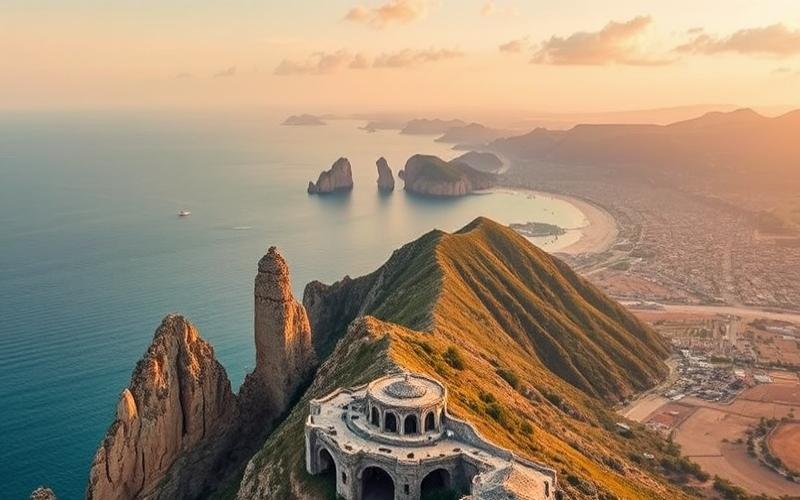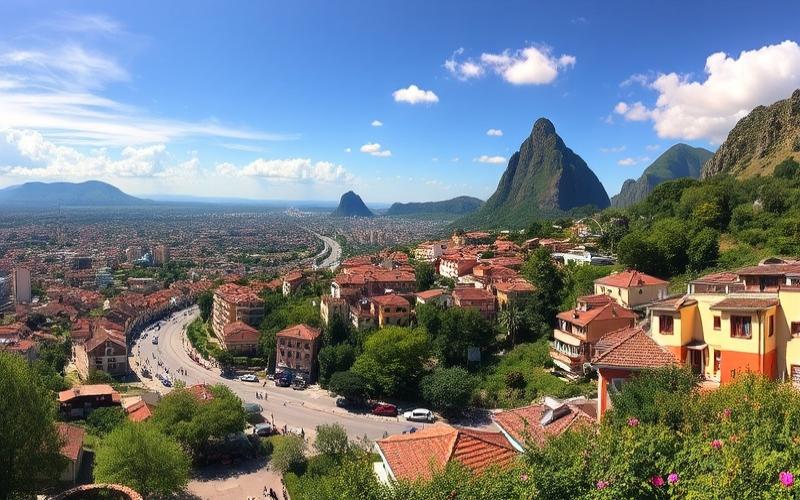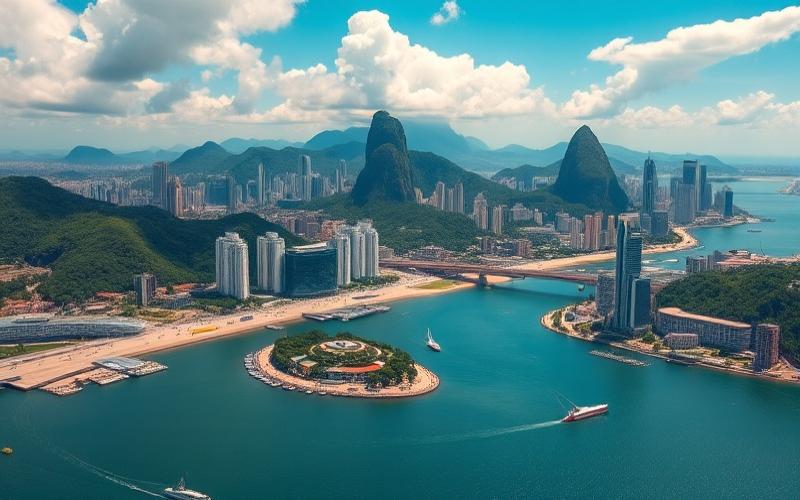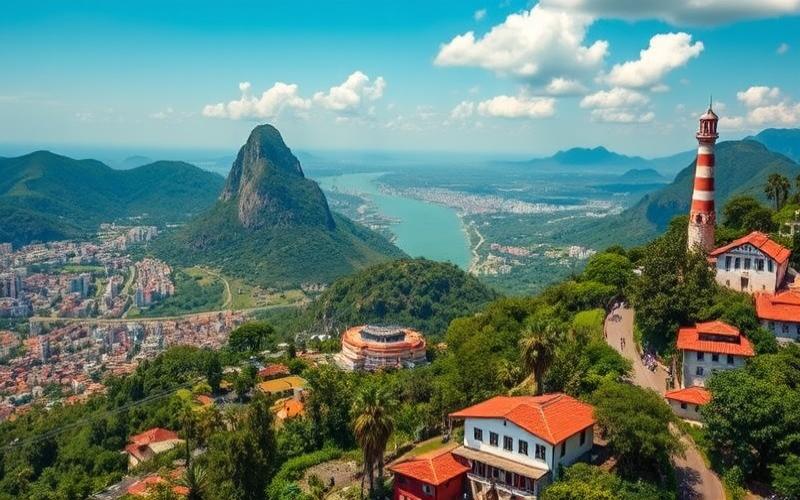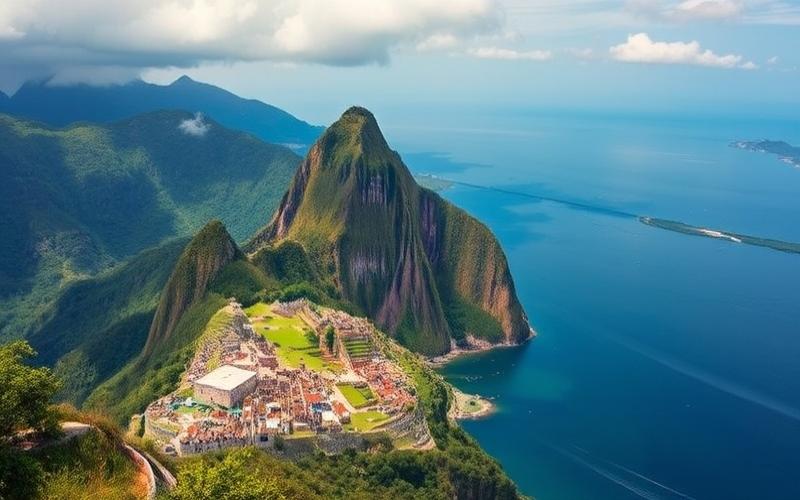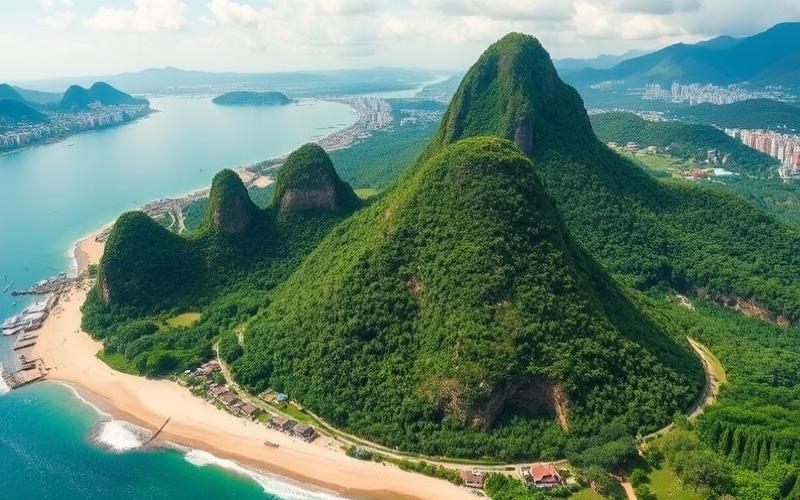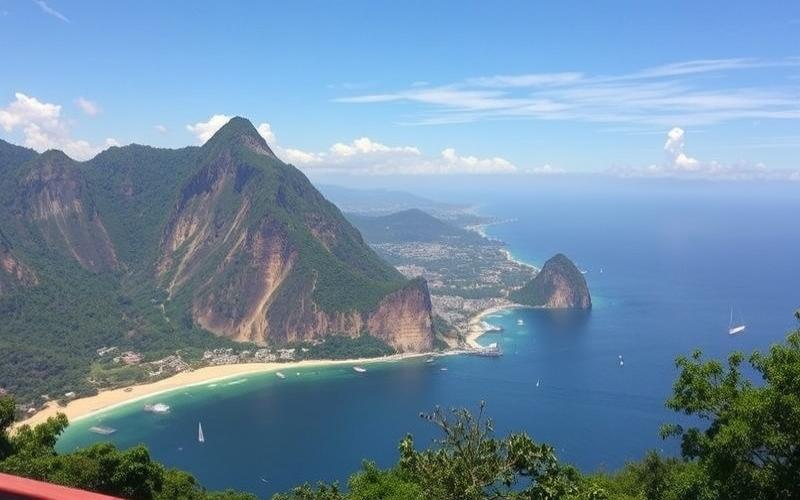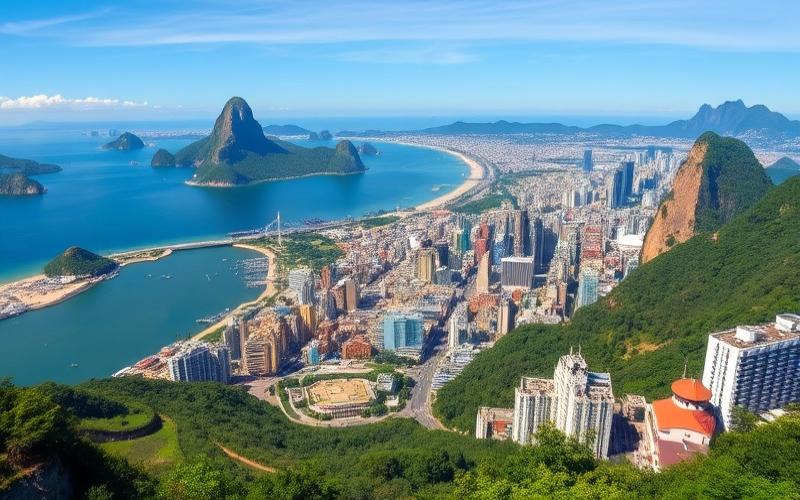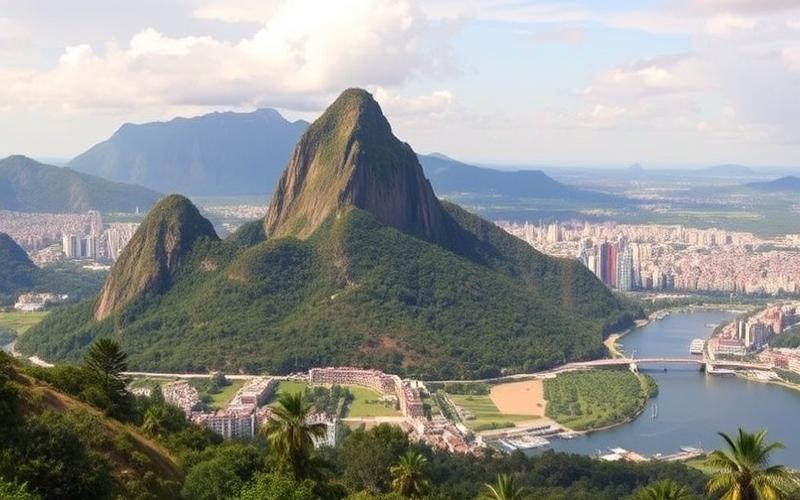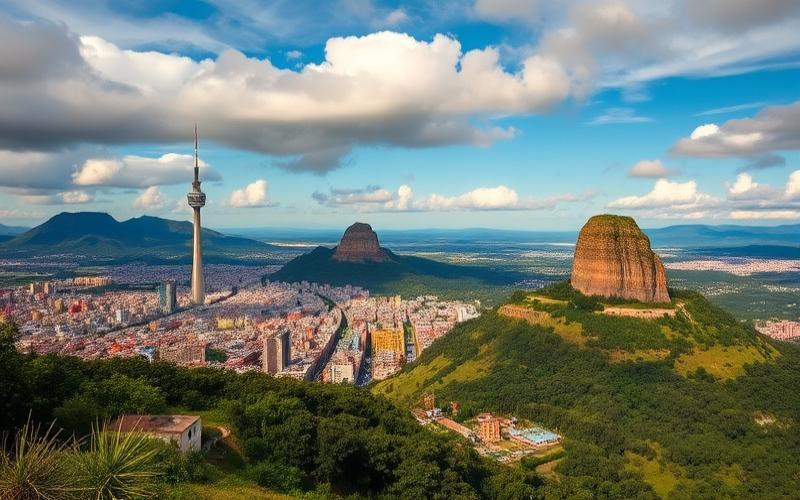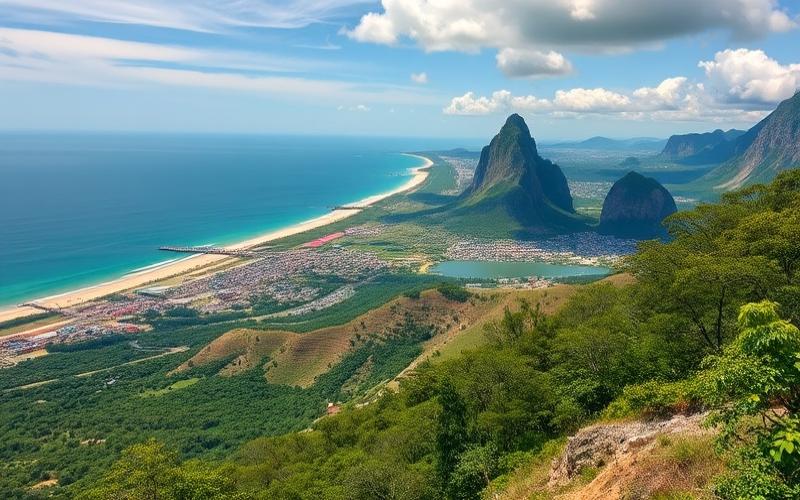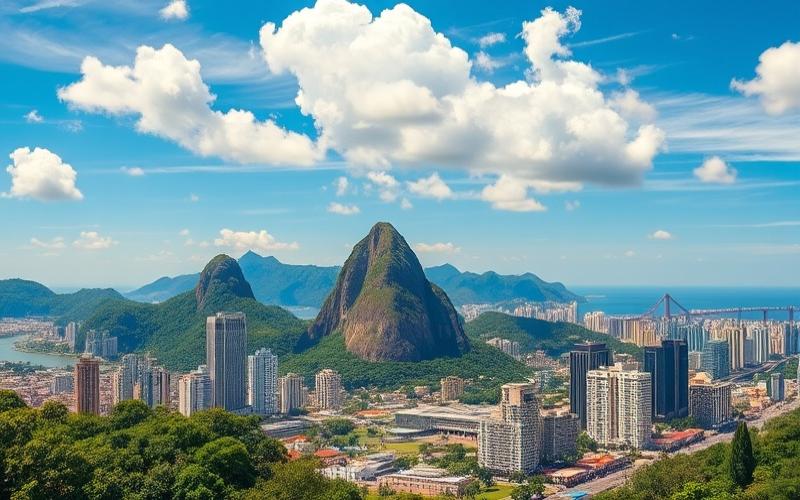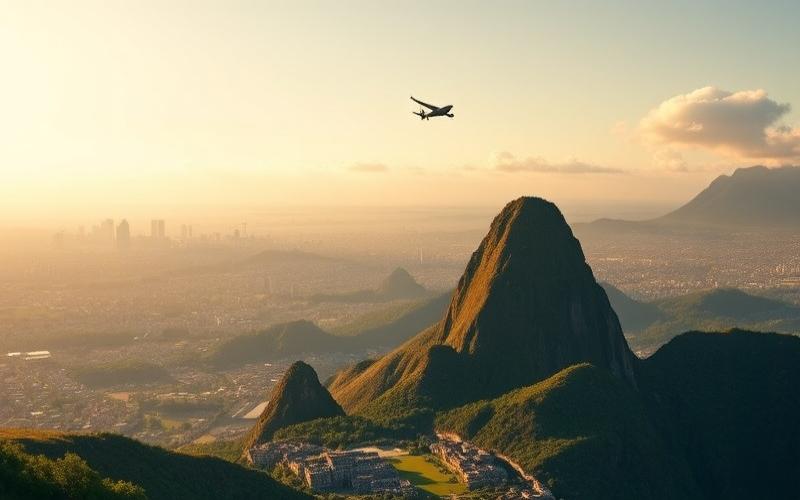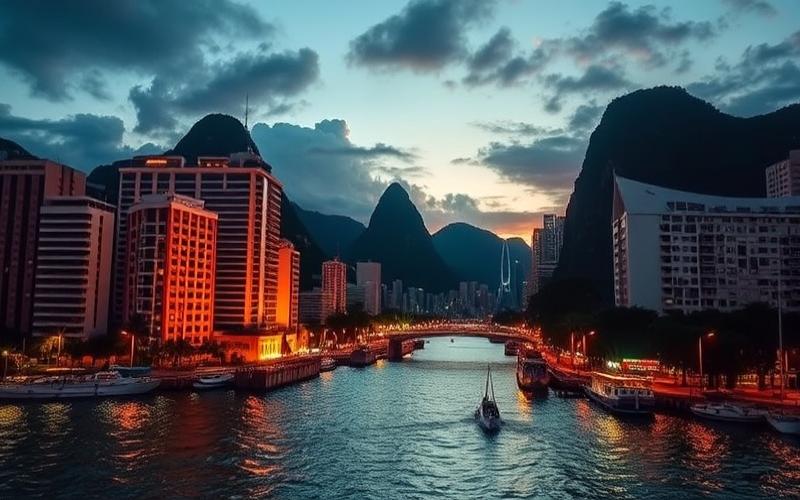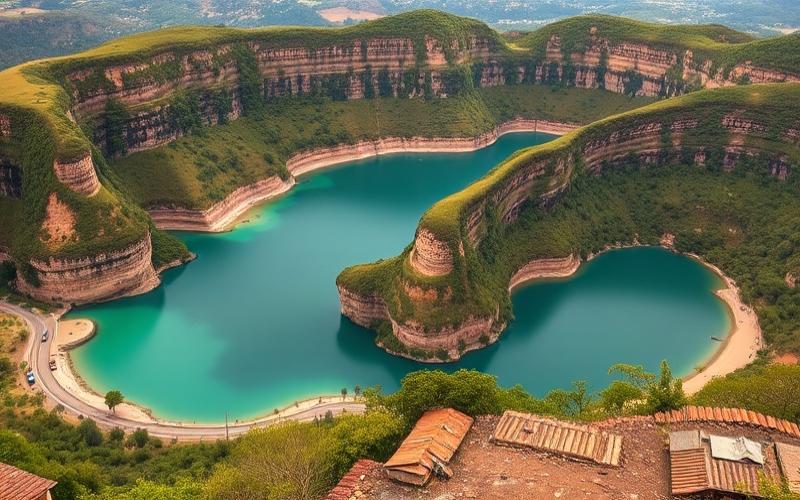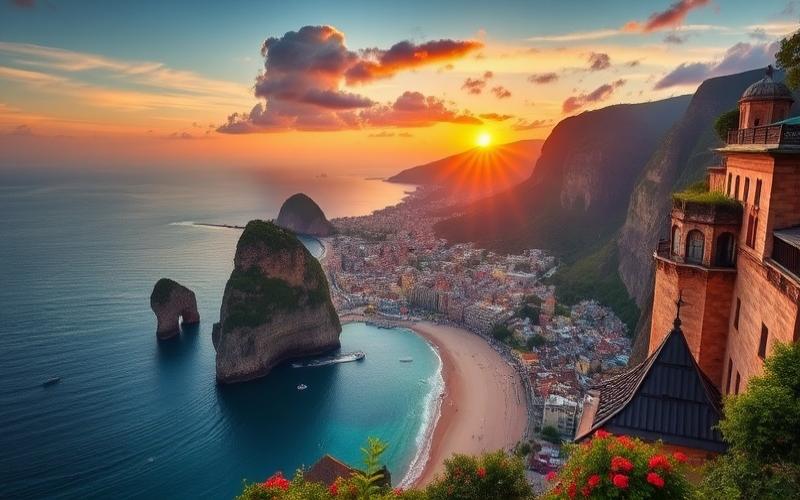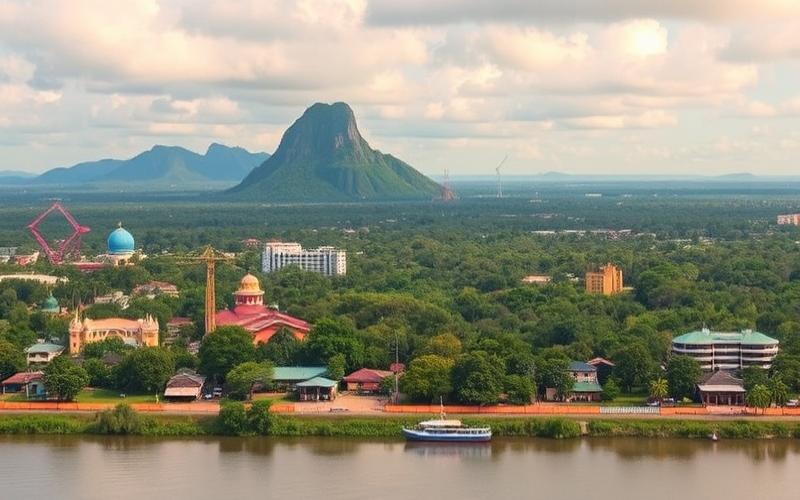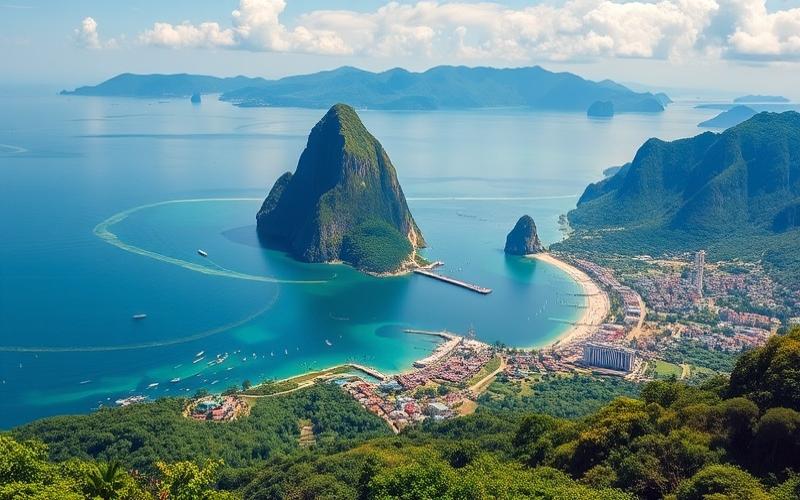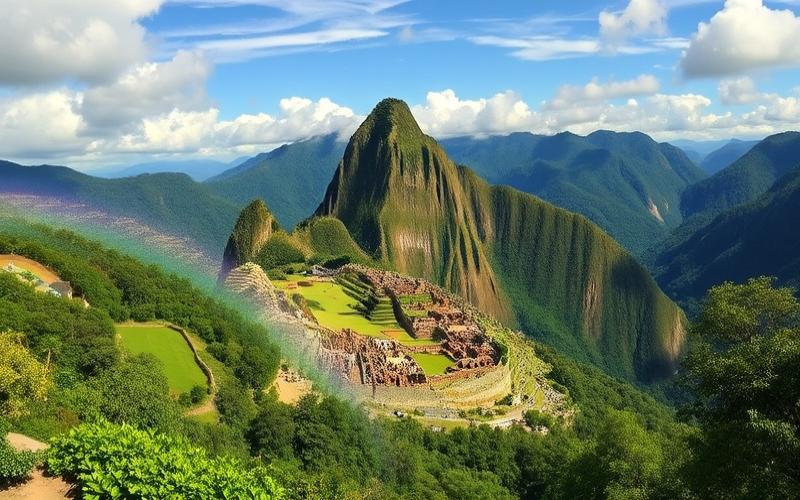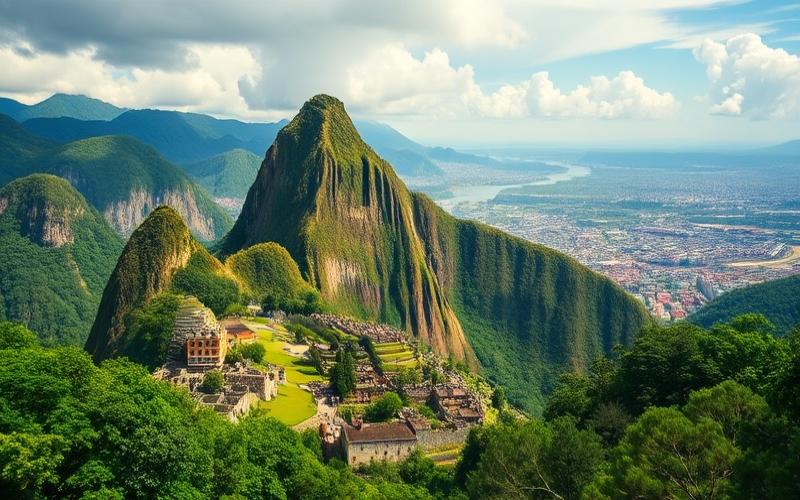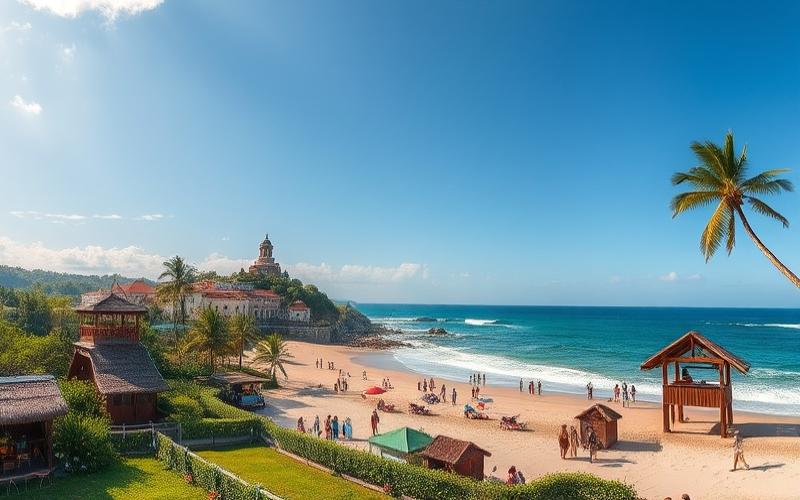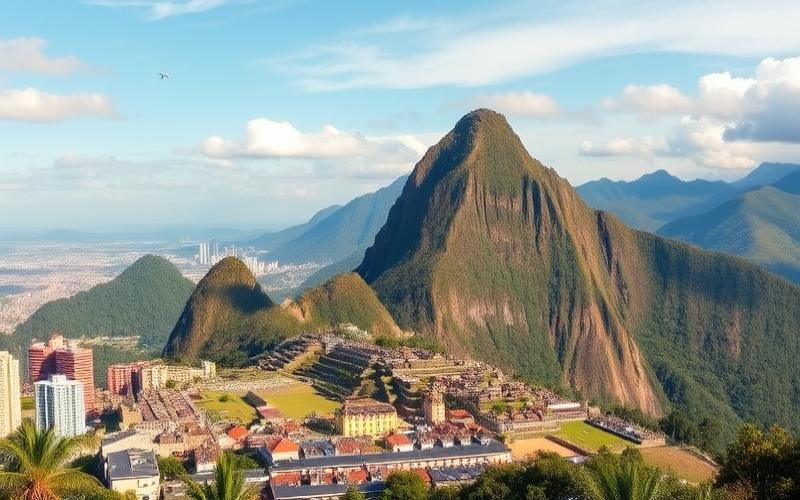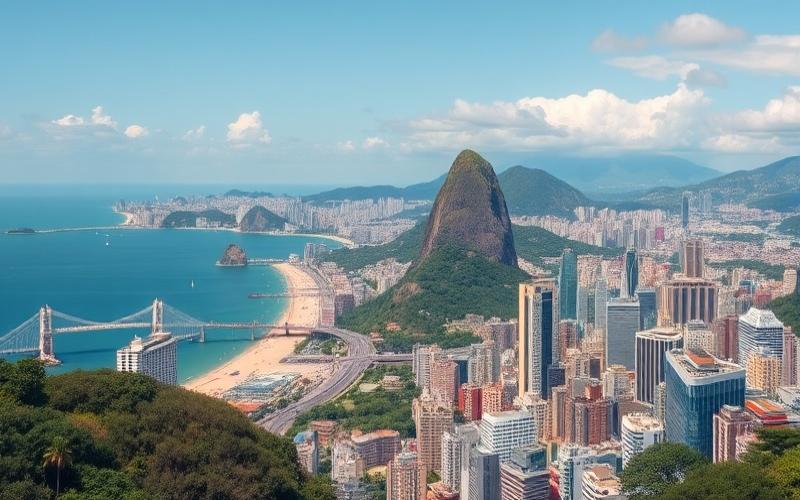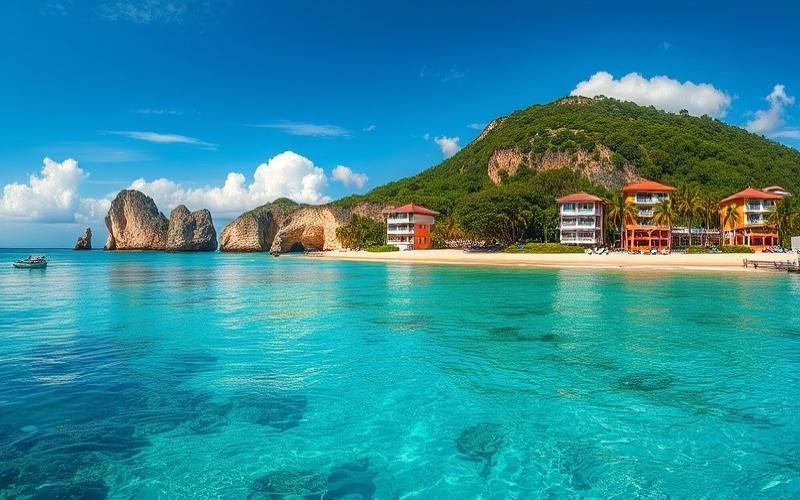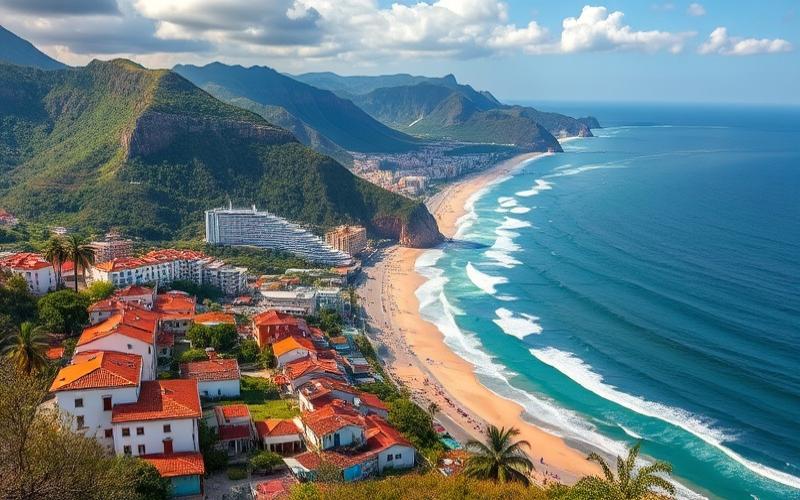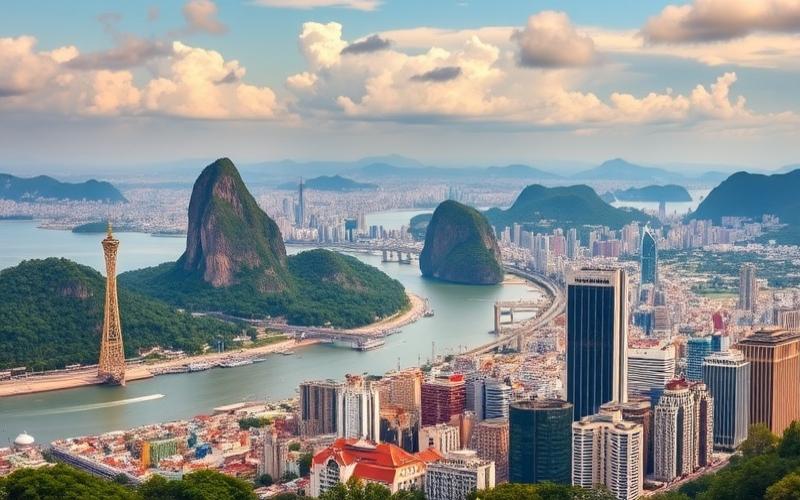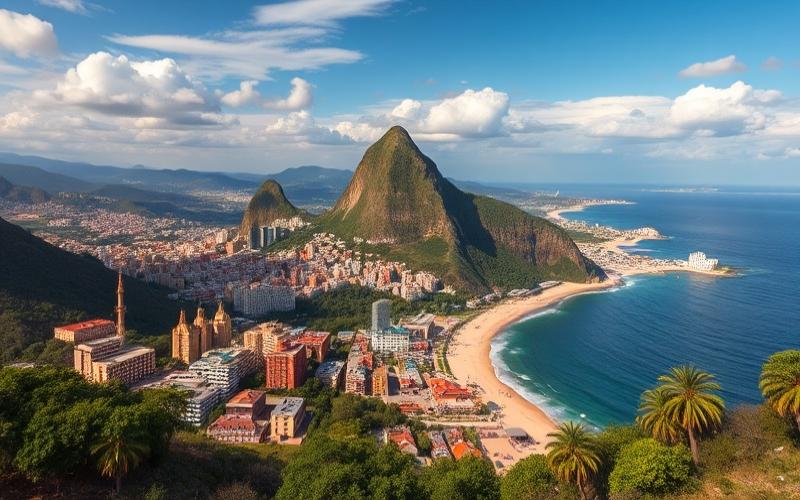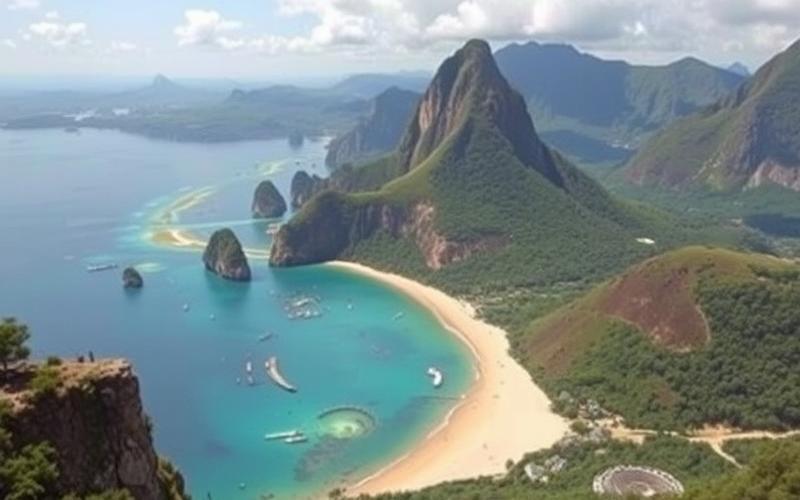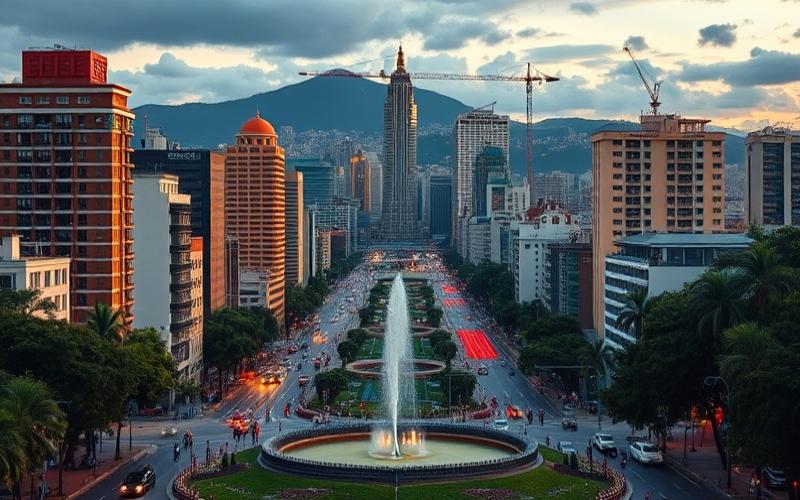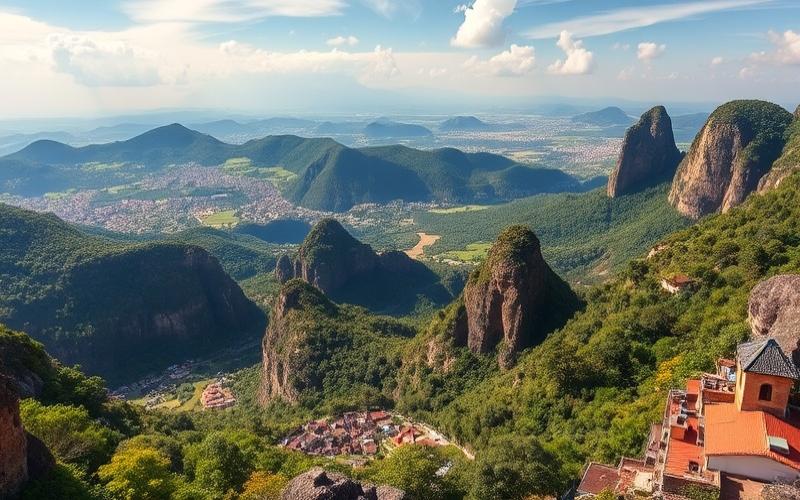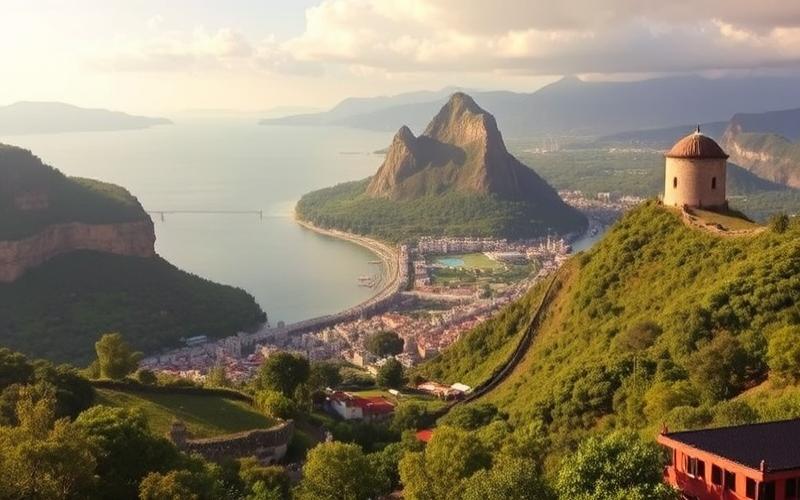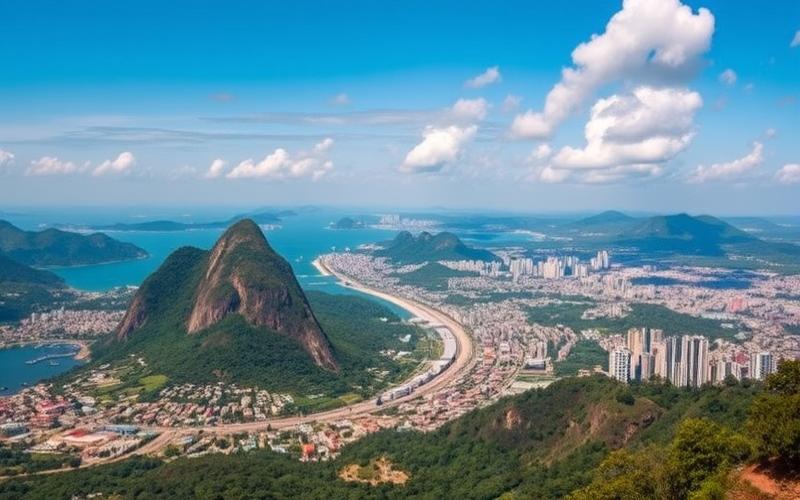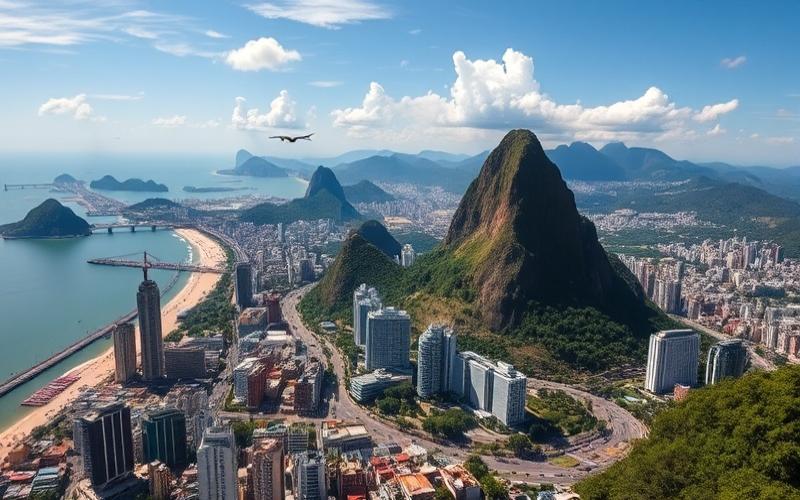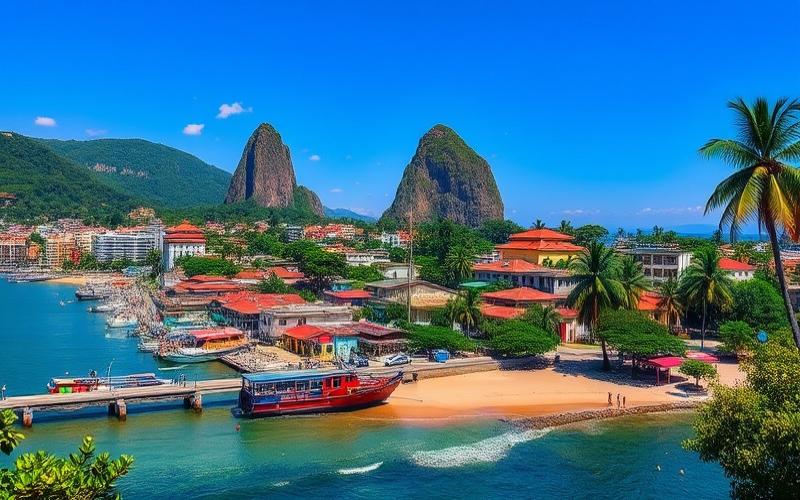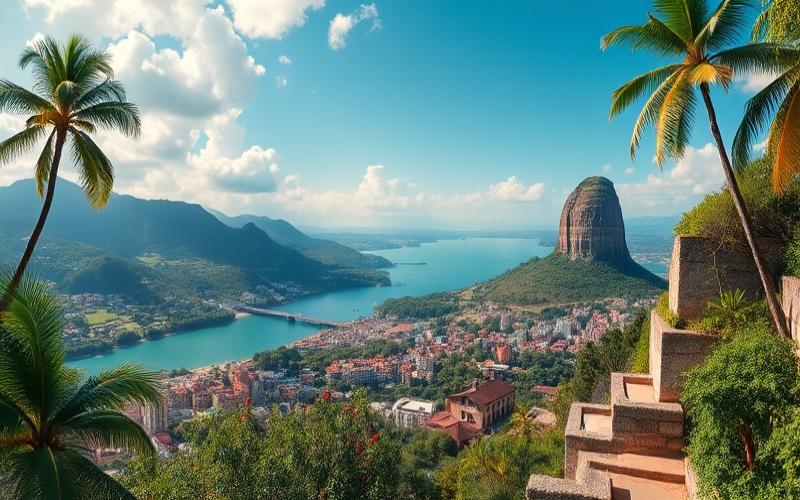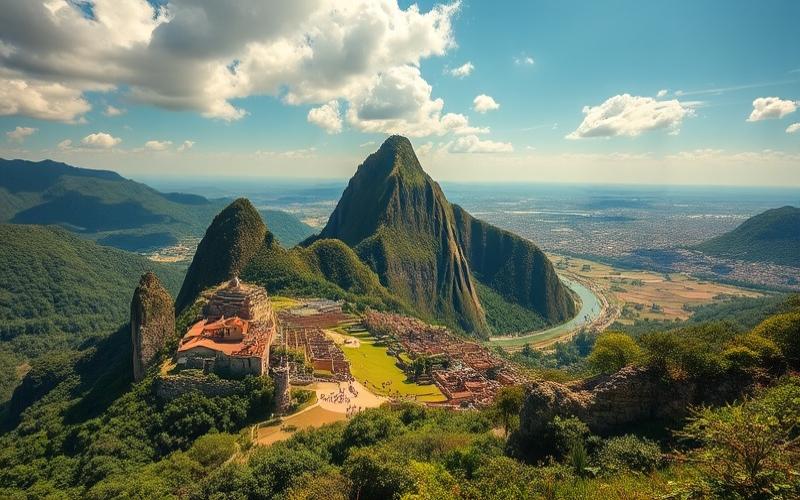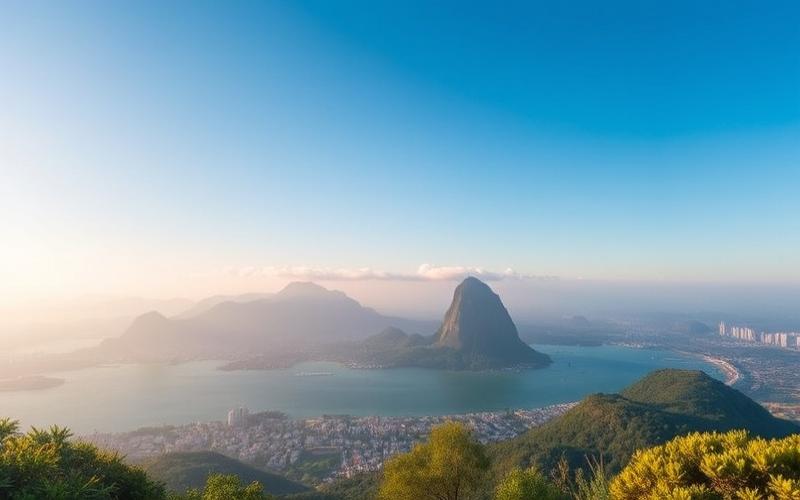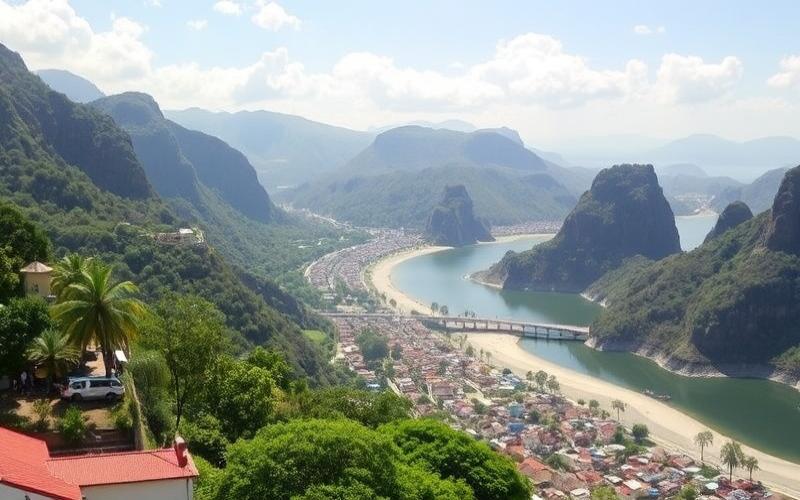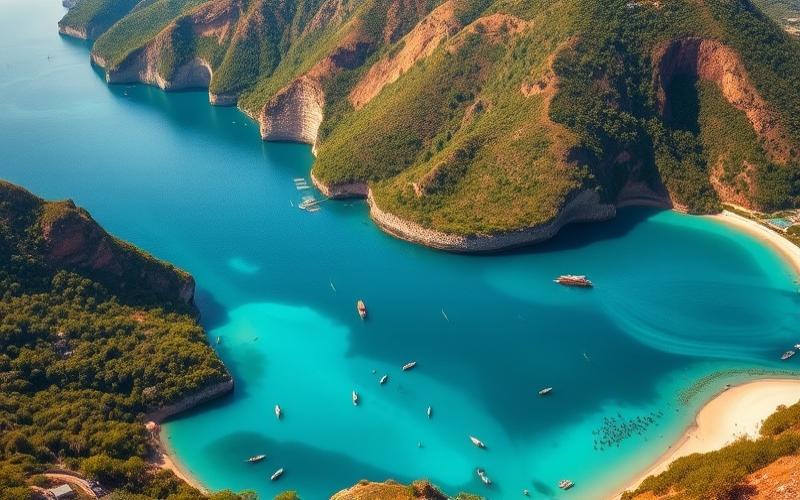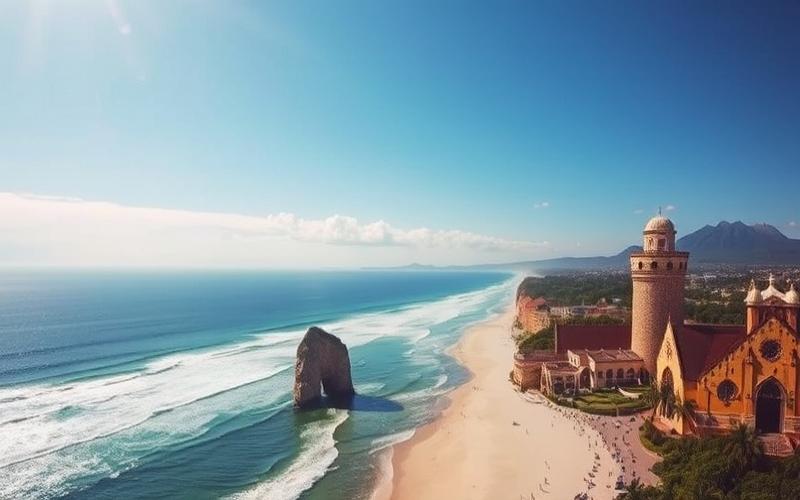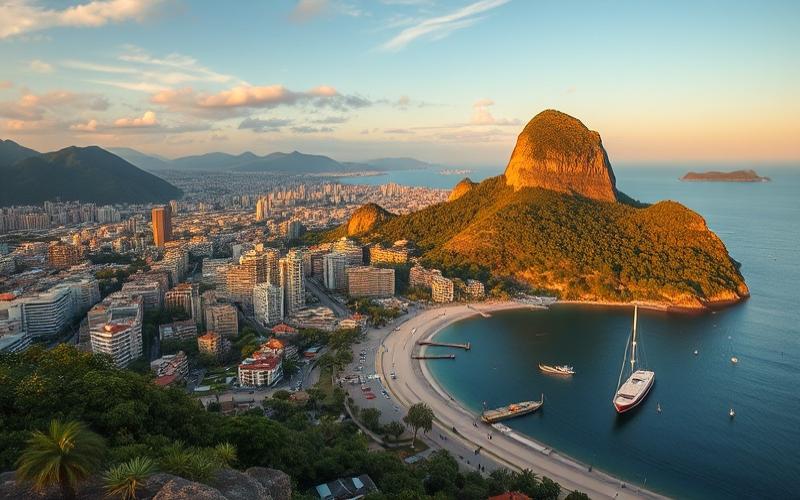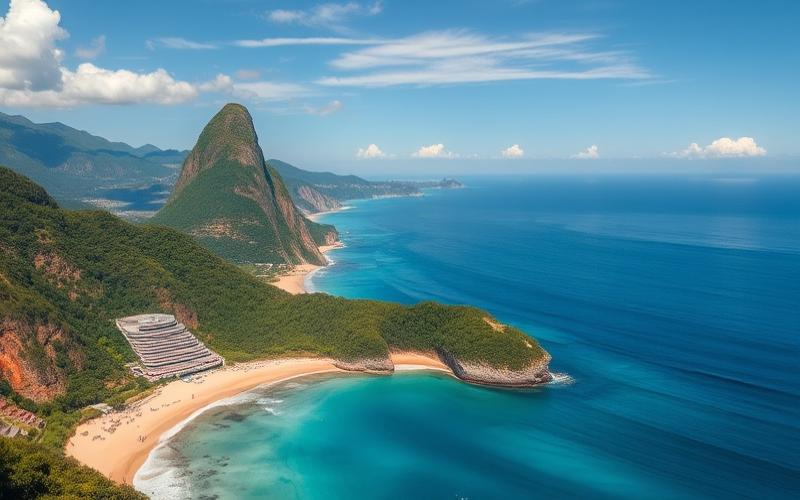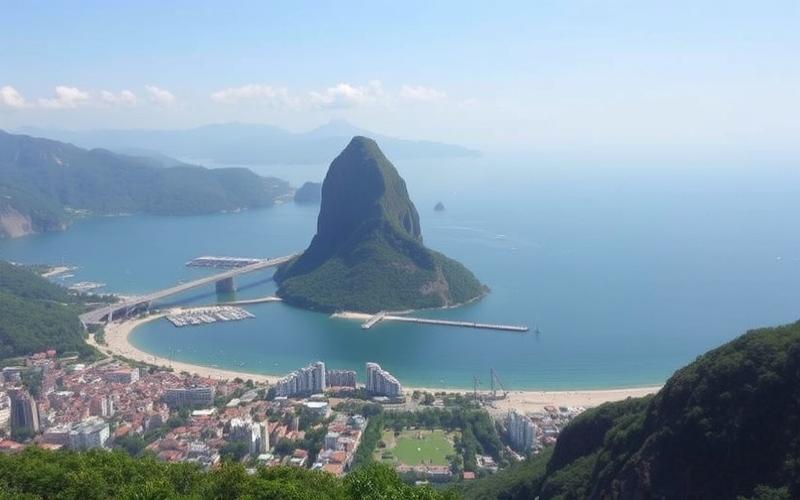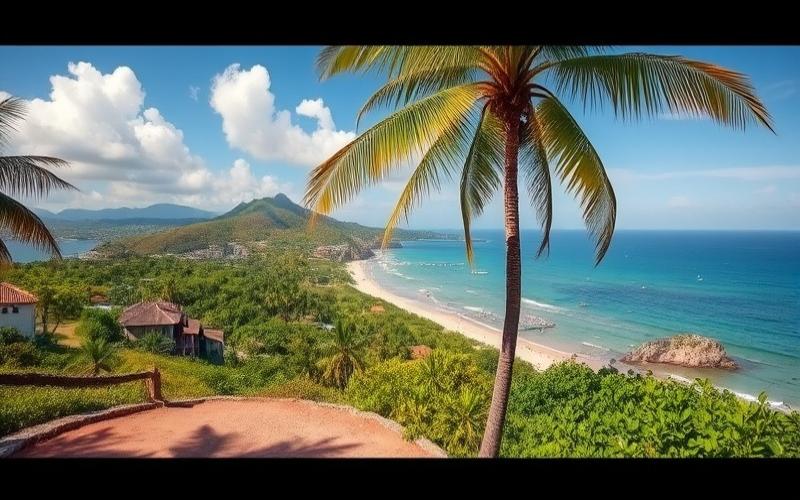
 Published on and written by Cyril Jarnias
Published on and written by Cyril Jarnias
Investing in Traditional Brazilian Villages: A Unique Opportunity
In an increasingly connected world, authenticity becomes a coveted treasure, making traditional Brazilian villages an investment opportunity not to be missed.
With the economic outlook for 2025, these hamlets offer unique potential, combining picturesque charm and sustainable growth in the country.
By investing in these Brazilian gems, one gains access to a booming market where tourism development harmonizes wonderfully with cultural heritage preservation.
This context creates an exciting dynamic where tradition and modernity converge, promising both financial returns and socially responsible investment.
Good to Know:
Traditional Brazilian villages benefit from a legal framework favorable to foreign investment, with tax incentives in certain regions.
Discovering the Authenticity of Brazilian Villages
Brazilian villages captivate with their preserved cultural traditions, local craftsmanship, regional gastronomy rooted in local terroirs, and traditional architecture inherited from the colonial period, creating a rare and immersive sense of authenticity. These elements enhance tourist appeal by offering high-value cultural and landscape experiences, conducive to ethical tourism that values local skills, short supply chains, and heritage conservation.
- Cultural Traditions
- Carnivals, dances, and regional music (forró, maracatu) animate small squares and night markets, creating lively social spaces for visitors and residents.
- Religious festivals and community practices take place in preserved historic neighborhoods, catalyzing the local economy through dining, homestays, and guided tours.
- Local Craftsmanship
- Workshops of painters, ceramicists, weavers, and traditional luthiers energize historic centers, with artisan markets structuring local value chains.
- Tourist visibility supports the intergenerational transmission of techniques and the upscaling of products, paving the way for territorial quality labels.
- Regional Gastronomy
- Northeastern cuisine (fish, coconut milk, typical dishes like peixada, carne de sol) attracts audiences seeking authentic terroirs, stimulating farmers, fishermen, and local dining.
- Highlighting local recipes and identity ingredients fosters culinary circuits and cooking schools, powerful tools for tourist differentiation.
- Traditional Architecture
- Historic centers with colorful facades, azulejos, baroque churches, and cobblestone streets offer a strong scenic setting, encouraging walking, photography, and cultural events.
- Conservation and rehabilitation of colonial houses fuel a market for charming hospitality (pousadas, boutique hotels) consistent with sustainability standards.
Examples of Villages and Small Towns Already Benefiting, and Positive Impacts
- Tiradentes (Minas Gerais)
- Assets: cobblestone streets, churches, colonial architecture, local museums, “postcard” village image ideal for strolling.
- Impacts: upscaling of accommodation and dining, valorization of local history, creation of cultural and tourism jobs.
- Paraty/Parati (Costa Verde)
- Assets: protected colonial center, craftsmanship, cultural events, nature and sea tourism.
- Impacts: diversification of offerings (culture, gastronomy, ecotourism), revitalization of workshops and independent businesses, increased international appeal.
- Olinda (Pernambuco)
- Assets: listed historic center, renowned carnival, artists’ and artisans’ workshops, coastal panorama.
- Impacts: increase in cultural attendance, income for artisans, consolidation of a network of local bars and restaurants.
- Bahia Villages (Trancoso, Arraial d’Ajuda, Maraú Peninsula)
- Assets: rustic atmosphere, soft mobility, artisan markets, traditional music, hippie-chic identity.
- Impacts: niche tourism oriented towards authenticity, support for night markets, opportunities for micro-tourism enterprises.
- São Luís and Historic Neighborhoods of the Northeast
- Assets: azulejo facades, traditional markets, local music scenes.
- Impacts: commercial revitalization of centers, gourmet and heritage circuits, cultural education for visitors and residents.
Why These Assets Represent Responsible Investment Opportunities
Growing Market for Experiential and Sustainable Tourism
- Target demand for cultural, gastronomic, and ecotourism stays, favoring low-carbon, small-scale models with direct local benefits.
- Destinations combining built heritage, living craftsmanship, and natural landscapes (coast, forests, dunes) benefit from premium and resilient positioning.
Priority Investment Levers
- Charming accommodations rehabilitating old buildings and respecting environmental standards (energy, water, materials).
- Incubation of craft workshops and boutiques, covered market spaces, training in artisanal trades and hospitality.
- Terroir gastronomy: locavore restaurants, cooking schools, farmer-fisher circuits, labeling of identity products.
- Soft infrastructure: heritage signage, pedestrian mobility, cycling routes and interpretive trails, site museums.
- Ecotourism: operations in natural areas that protect the ecosystem while offering guided experiences, with controlled carrying capacity.
Multiplier Effects for Local Communities
- Creation of skilled, non-outsourceable jobs (guides, restaurateurs, artisans, curators, musicians), with skill enhancement through training.
- Reinvestment of tourism revenue in heritage conservation, public services, and cultural events, strengthening local identity.
- Inclusion of community actors through artisan cooperatives, short food supply chains, and participatory governance of historic centers.
Table – Exploitation Potential and Project Types
| Local Resource | Target Project | Expected Benefits | Sustainability Safeguards |
|---|---|---|---|
| Colonial Architecture | Rehabilitation of pousadas, heritage circuits | Extended stays, higher average spending | Local materials, energy standards, capacity limits |
| Living Craftsmanship | Night markets, workshop-schools, e-commerce | Direct income for artisans, cultural valorization | Traceability, fair prices, intellectual property |
| Terroir Gastronomy | Locavore restaurants, culinary festivals | Revitalization of local agriculture/fishing, differentiation | Seasonality, anti-waste, responsible sourcing |
| Music and Festivals | Cultural programming, artist residencies | Deskewing of tourist flows, notoriety | Solidarity ticketing, controlled noise, respect for rituals |
| Nature and Landscapes | Guided ecotours, trails, interpretation centers | Added value without artificialization | Impact studies, quotas, benefits to communities |
Key Highlights
Brazilian villages combine built heritage, artisanal creations, and regional culinary scenes in remarkable natural settings, offering a unique value proposition for ethical and immersive tourism.
Betting on heritage rehabilitation, organized craftsmanship, and terroir gastronomy allows capturing premium demand while maximizing local benefits and destination resilience.
Developments already observed in Tiradentes, Paraty, Olinda, Trancoso, and along the Northeast coast demonstrate positive effects on employment, cultural transmission, and revitalization of historic centers.
Roadmap for Responsible Investors
- Map tangible and intangible heritage, define tourist carrying capacity and off-peak seasons.
- Co-develop quality and sustainability charters applicable to projects with municipalities, artisan associations, and restaurateurs.
- Prioritize reversible renovations and multifunctionality of spaces (accommodation, workshops, stages) to optimize use and revenue.
- Implement value-sharing mechanisms: conservation funds, local employment quotas, sourcing from cooperatives.
- Deploy transparent impact measurement (job indicators, artisan income, conservation, resident satisfaction) and adjust flows continuously.
Good to Know:
Brazilian villages, with their preserved cultural traditions, unique local craftsmanship, rich regional gastronomy, and traditional architecture, offer an authentic experience that captivates more and more tourists seeking cultural discoveries. These elements, sources of growing tourist appeal, represent major investment opportunities in ethical and sustainable tourism. Villages like Paraty and Trancoso have already benefited from similar developments, where respect for traditions and authenticity have led to positive impacts on local communities. The responsible exploitation of these cultural riches offers clear potential to diversify the local economy, thus attracting investors concerned with sustainable development and support for rural economies.
Investment Opportunities in Brazilian Rural Real Estate
Key Opportunities and Advantages
- Rural properties show an initial acquisition cost 30–60% lower than comparable urban assets, especially outside capitals and coastal areas, lowering the entry ticket and improving net rental yield.
- Price volatility is often lower in rural areas, with longer cycles and lower correlation to interest rates, stabilizing patrimonial value.
- Recurring costs (rural land tax – ITR, maintenance, security) remain structurally lower than the average urban property tax (IPTU), preserving operational margins.
Demand Dynamics: Sustainability and Authenticity
- Appeal for sustainable lifestyles (agroforestry, permaculture, eco-lodges) and authentic villages stimulates interest in fazendas, small properties, and rural pousadas.
- “Farm-to-table” stays, extended remote work, and ecotourism boost seasonal occupancy, with annual occupancy rates of 45–65% for well-located, well-rated eco-accommodations.
- Domestic buyers seek retreats 2–3 hours from metropolitan areas, driving prices in “nature” micro-markets while remaining below urban equivalents.
Incentives and Public Policies
- Federal and state programs for rehabilitation of historic centers, upgrading tourist accommodations, and ecotourism (local municipal tax relief, temporary exemptions for renovations, permit facilitation).
- Rural financing mechanisms (subsidized credit for green infrastructure, solar energy, efficient irrigation) and support for agritourism.
- Pro-investment municipal frameworks: temporary IPTU/ITR reductions for redevelopment and rural tourism projects, one-stop shops for licenses and registrations.
Brazilian Regions with High Potential and Distinctive Characteristics
| Region | Investment Assets | Indicative Entry Ticket | Preferred Strategies |
|---|---|---|---|
| Minas Gerais (Zona da Mata, Circuito do Café) | Mild climate, coffee heritage, rural gastronomy, proximity to Rio/Belo Horizonte | Small productive fazendas from 8–15k BRL/ha depending on terroir | Eco-lodges, agroforestry, coffee/cacao circuits, guesthouses |
| Serra Gaúcha (RS) | Wine tourism (Vale dos Vinhedos), Italian architecture, strong weekend demand | Small vineyard plots/guesthouses from 1.2–2.5M BRL | Bed & breakfasts, events, high-value-added products |
| Chapada Diamantina (BA) | Parks, trekking, waterfalls, growing ecotourism | Tourist rural land from 80–150k BRL | Sustainable lodges, glamping, nature experiences |
| Mantiqueira (MG/SP/RJ) | Cooler temperatures, proximity to São Paulo/Rio, gastronomic terroirs | Small farms 1–5 ha from 900k–2.5M BRL depending on access/view | Premium short-term rentals, wellness retreats |
| Coastal Northeast Rural (AL, PE, RN) | Beach proximity, artisan culture, long tourist seasons | Rural pousadas at 1–3M BRL away from waterfront | Agritourism + beach, weddings, local cuisine |
| Western Paraná and Interior Santa Catarina | Logistics, agro-industry, relative security | Productive properties 12–25k BRL/ha (mixed) | Educational agritourism, energy diversification |
Market Data and Yield
- Rural prices: increases of 6–10% year-over-year in tourist micro-markets since 2022, driven by limited supply and rising ecotourism.
- Revenues: ADR (average daily rate) for quality eco-lodges in sought-after regions from 350–900 BRL, with high season peaks >1,200 BRL; occupancy rates 50–70% in high season and 30–50% in low season.
- Net rental ROI: 6–10%/year for well-managed accommodations; 8–12% for hybrid assets (accommodation + paid activities: tours, gastronomy, workshops).
- Capital gains: 4–7%/year over 3–5 years in corridors near metropolitan areas; 2–4%/year in more remote areas but with lower volatility.
Local Impact and Heritage Preservation
- Multiplier effects: every 1 BRL spent by a rural visitor generates 1.6–2.3 BRL in the local economy (transport, crafts, dining).
- Creation of non-outsourceable jobs: 3–6 direct jobs per small accommodation unit of 8–12 keys, plus indirect jobs (guides, partner farms).
- Preservation: rehabilitation of vernacular architecture and funding of archives, village museums, and traditional festivals increase attractiveness and support cultural transmission.
2024–2025 Trends and 2025 Forecasts
- Demand: continuation of leisure relocation towards domestic and remote work, increasing 3–7 night stays in nature.
- Financing: conditions still selective; structuring with down payment >30% and mixed-rate debt; promotion of direct financing by sellers and local cooperatives.
- Digitalization: rise of direct bookings and local platforms; better monetization through experiences and farm retail.
- 2025 Forecast: median net ROI 7–9% for well-located eco-accommodations; land value +3–6% in areas with robust tourist flows; main risks related to interest rates, road access, and permits.
Points of Vigilance and Compliance
- Restrictions for foreign acquisition of rural land: need to audit ownership, location (border areas), land use, and structures (emphyteutic leases, usufruct, surface rights) to remain compliant.
- Due diligence: verification of title (certificates), environmental permits, water/access easements, georeferencing, IBAMA/ICMBio compliance in sensitive areas.
- Taxation and charges: plan for ITR (rural), local contributions, and timely temporary exemptions for eligible renovation or development.
Recommended Investment Models
- Acquisition + light renovation of a small farm 2–3 hours from a metropolis, targeting 55–65% annual occupancy via direct channels and experience partnerships.
- Conversion of a small fazenda into an eco-lodge of 8–15 keys with activities (hiking, local cuisine), aiming for net ROI 8–11% with average spending >600 BRL/night.
- Platforms for agro-experiences (coffee, cacao, wine) integrating boutique and workshops, to extend average stay (+0.5–1.0 night) and increase RevPAR by 12–20%.
Good to Know:
Investing in Brazilian rural real estate presents numerous advantages, including initial costs generally lower than urban areas, making it an attractive option for investors seeking to diversify their portfolio. The growing appeal for a sustainable and authentic lifestyle has sparked renewed interest in rural properties, accentuating their demand. The Brazilian government encourages this development through tax incentives and policies favoring the development of rural regions, such as the National Program for Family Agriculture (PRONAF). Among notable opportunities, regions like Minas Gerais, known for its picturesque landscapes and rich cultural heritage, offer unique and appealing characteristics. Furthermore, investments in these areas can have a positive impact on the local economy by stimulating employment and preserving the cultural heritage of traditional villages. Recent trends indicate rising return on investment, with optimistic forecasts for 2025, in a market increasingly oriented towards sustainability and authenticity.
Important:
- Lower initial cost, the rise of “sustainable” demand, and local incentives create a favorable 2024–2025 window, subject to strict due diligence and professional management.
- Targeting micro-locations with strong accessibility, clear cultural identity, and differentiated experience offerings is crucial to secure a net ROI of 7–10% and a sustainable valuation trajectory.
Indicators to Monitor
- Interest rates, construction inflation, cost of debt.
- Domestic tourist flows by state and seasonality.
- Municipal policies on exemptions and rural zoning.
- Quality of road access and connectivity (4G/5G) for remote work.
The Appeal of Cultural and Natural Heritage
Brazilian villages embody a living memory where indigenous legacies, Portuguese and African influences, and local know-how intersect, constituting a powerful lever of attractiveness for visitors seeking authenticity and for investors sensitive to enduring cultural assets. Their colonial urban fabric, baroque architectures, and still-practiced traditions create immersive experiences difficult to replicate, fostering regular tourist flows and sustainable local economic benefits.
Iconic Examples of Attractive Villages and Historic Centers
- Ouro Preto (Minas Gerais) — first Brazilian site inscribed as a World Heritage site, remarkable for its colonial urbanism, baroque churches, and gold mining history, major asset for cultural circuits, high-end hospitality, and heritage dining.
- Olinda (Pernambuco) — UNESCO-listed historic center, known for its colorful slopes, convents, and carnival, stimulating charming hotels, artist residencies, and guided cultural experiences.
- Diamantina (Minas Gerais) — classified historic town, platform for mining itineraries, choral music, and crafts, suitable for heritage interpretation projects and educational tourism.
- São Miguel das Missões — ruins of the Jesuit Missions of the Guaranis, transnational site, offering a setting for night scenographies, interpretation centers, and binationalized tourist products.
- Other relevant UNESCO hubs for itinerancy networks: Salvador de Bahia, São Luís, Goiás, Brasília (modernist capital), Paraty and Ilha Grande (mixed culture/biodiversity site), Iguaçu National Park, and new listings like Cavernas do Peruaçu National Park which reinforce interest in emerging destinations near authentic villages.
Brazil’s exceptional biodiversity enhances the appeal of these villages by positioning them as gateways to unique ecosystems, combining nature and culture in the same value proposition.
Key Ecosystems and Local Synergies
- Amazon Rainforest — mega-diversity, traditional knowledge, river navigation, and wildlife observation; opportunities for community lodges, participatory research circuits, non-timber forest products, and local guide training.
- Cerrado — tropical savanna rich in endemisms, traversed by many rural villages; potential for trekking, birdwatching, agritourism, and valorization of biome gastronomy (baru, pequi) via short circuits and territorial brands.
- UNESCO Natural Sites such as Iguaçu and newly inscribed parks catalyze investments in soft mobility, visitor centers, and scientific mediation, strengthening the appeal of neighboring villages as access and service hubs.
Intangible cultural heritage — music, dance, gastronomy, festivals — translates into monetizable value chains for investors oriented towards culture and eco-experiences.
Economic Levers from Living Culture
- Music and Dance: programming of rodas, maracatus, congados, and chorinho; creation of school-workshops, residencies, local labels, and paid events integrated into high seasons (Olinda Carnival, baroque festivals in Minas).
- Gastronomy: terroir cuisine (moqueca, queijo minas, artisanal cachaça), farmers’ markets, gourmet routes, and culinary workshops; upscaling of heritage bistros and “farm-to-table” circuits.
- Craftsmanship: ceramic, soapstone carving in Ouro Preto, embroidery, and lutherie sectors; museum boutiques, territorial e-commerce, and creative incubators.
- Events and Interpretation: festivals, mapping on historic facades, site museums, and multilingual audio-guided tours, promoting higher average tickets and deskewing of flows.
Sustainable tourism and local preservation initiatives constitute decisive competitive advantages, reducing reputational risks and increasing the perceived value of destinations.
Sustainable Differentiation Mechanisms
- UNESCO Framework: quality label, international visibility, access to expertise networks, and incentives for conservation; credibilizes responsible hospitality projects and historic building restoration.
- Local Governance: heritage councils, master plans, material charters, visitor quotas, and smart ticketing; possibility of performance contracts (energy/water), incentive taxation, and public-private partnerships.
- Eco-tourist Products: interpreted trails, cycle routes, birdwatching, low-impact canoeing, certified community guiding; recurring revenue models via multi-site passes and memberships.
- Mitigation Measures: control of artificialization, waste management, shared electric transport; standards for reversible construction and material reuse.
- Human Capital: training of guides, artisans, hoteliers, curators; skills transfer and quality labels to guarantee experience authenticity.
Table — Investment Opportunities by Asset Type and Expected Returns
| Cultural/Natural Asset | Economic Model | Indicative Capex | Competitive Advantages | Local Impacts |
|---|---|---|---|---|
| UNESCO Historic Centers (Ouro Preto, Olinda, Diamantina) | Boutique hotels, heritage dining, interpretation ticketing | Medium/High | Label effect, stable flows, high ARPU | Skilled jobs, building preservation |
| Jesuit Mission Sites | Night scenography, museums, events | Medium | Cross-border narrative, extended seasonality | Ticket revenue, educational offerings |
| Amazon/Cerrado Gateways | Low-impact lodges, wildlife safaris, citizen science | Medium | Nature-culture differentiation, long stays | Valorization of local knowledge, conservation |
| Gastronomy and Craftsmanship | Territorial brands, workshops, e-commerce | Low/Medium | Product margins, storytelling | Inclusion of producers, transmission |
| Soft Mobility and Trails | Multi-site passes, guiding, equipment rental | Low/Medium | Increased average spending, loyalty | Reduced footprint, better flow distribution |
Implementation Best Practices for Investors
- Co-design with communities and heritage institutions to guarantee authenticity and social acceptability.
- Diversify revenue streams (accommodation, ticketing, boutique, F&B, bespoke experiences) to smooth seasonality.
- Adopt measurable standards (carbon, water, materials, biodiversity) and certify operations.
- Prioritize rehabilitation of existing buildings, renewable energy, and soft mobility to reduce opex and strengthen branding.
- Integrate multilingual cultural and naturalist mediation to increase value added per visitor.
By articulating classified cultural heritage, world-ranking biodiversity, and sustainable governance, Brazil’s authentic villages offer a rare combination of tourist appeal and economic resilience, constituting a differentiated and responsible investment platform.
Good to Know:
Investing in Brazil’s authentic villages represents a unique opportunity, largely thanks to their rich cultural and natural heritage. Villages like Ouro Preto and Olinda, classified as UNESCO World Heritage sites, offer historical immersion and attract investors and tourists through their colonial architecture and living traditions. The diversity of Brazilian biodiversity, including unique ecosystems such as the Amazon rainforest and the cerrado, further enhances this appeal, enabling sustainable eco-tourism projects. Cultural heritage, encompassing samba, carnival, or typical Brazilian gastronomy, offers not only a deep connection with local culture but also possibilities for economic development. Promoting traditional festivals and artisanal activities can transform these villages into attraction hubs, while local initiatives for heritage preservation, supported by sustainable tourism, increase the competitiveness of these places as investment destinations.
Maximizing Your Investment in Brazilian Rural Regions
Brazilian rural regions in 2025 offer significant opportunities in agribusiness, rural tourism, and local craftsmanship, driven by robust domestic demand and export competitiveness gains, despite a more volatile macroeconomic context.
- Agribusiness
- Crops and livestock: new records expected for soybeans (around 167 Mt), record exports of poultry and pork, and a strong position in cotton, supported by more favorable climate conditions and the depreciation of the real improving price competitiveness.
- Value chains: upscaling and rapid adaptation to international standards, including in niches like wine in the South (attractiveness to international luxury investors), and consolidation of coffee, sugar-ethanol, and pulp sectors.
- Agtech: expanding startup ecosystem (1,953 in 2023 vs 1,125 in 2019), mechanization/automation solutions facing labor costs that can represent 80% of production costs, and adoption of input optimization technologies.
- Rural Tourism
- Potential for income diversification in authentic territories, supported by valorization of natural heritage and short circuits, with gradual improvement of communication and export infrastructure also benefiting tourist flows.
- Local Craftsmanship
- Strengthening of identity micro-sectors linked to regional cultures, with increased outlets via rural tourism and digital marketplaces, in synergy with family farming which provides most local food.
Public Initiatives and Incentives for Investing in Rural Areas
- Climate and Productivity Programs
- ABC+ Plan (Low Carbon Agriculture) 2020–2030: climate adaptation, emission reduction, integrated landscape management; framework favorable to sustainable practices and access to green financing.
- Land Policies and Agrarian Reform
- Recognitions of new settlements (e.g., Quilombo Campo Grande, >4,000 ha for ~300 families; announcement of 60 new settlements covering 4,883 families), political signal in favor of structuring rural territories, although pace and budgets remain limited in 2025.
- Support for Family Farming and Territoriality
- Legacy of policies supporting family units and territorial development, key condition for integrating rural households into growth and multiplying local economic functions, to be combined with better access to land and institutions.
Challenges to Consider and Mitigation Levers
- Infrastructure and Logistics
- Persistent deficits in secondary roads, warehouses, connectivity, and cold chains; however, agricultural development accompanies investments in communication and export infrastructure that can be co-used by rural actors.
- Recommended Actions:
- Public-private co-investments in proximity logistics hubs.
- Partnerships with cooperatives for grouping and transport contracting.
- Off-grid solutions (solar energy, rural 4G/5G connectivity) and micro collection/processing centers.
- Market Access and Standardization
- International requirements (traceability, deforestation, European due diligence, biosecurity) requiring compliance and certifications; Brazil adapts quickly but gaps remain across territories.
- Recommended Actions:
- Certification programs (Organic/UTZ, Rainforest, ESG) articulated with the ABC+ plan.
- Digital tools (farm ERP, IoT, remote sensing) for traceability.
- Commercial alliances with international buyers and B2B platforms.
- Land Issues and Social Inclusion
- Slow progress in land reform in 2025 (budget allowing at most ~4,000 families settled) and significant waiting lists (~100,000 families), potentially creating uncertainties of occupation and local governance.
- Recommended Actions:
- Enhanced land due diligence; community engagement with local movements and cooperatives.
- Fair contractual models (value sharing, guaranteed purchases, technical assistance).
- Climate and Price Volatility
- Persistent effects of 2024 drought, inflation, rising rates, and slower growth affecting margins and local consumption; but export competitiveness strengthened and record prospects in several sectors in 2025.
- Recommended Actions:
- Crop insurance, currency hedging, multi-crop and multi-market diversification.
- Investments in water resilience (efficient irrigation, tolerant varieties).
Case Studies and Success Examples
- Premium Wine in Rio Grande do Sul
- Upscaling of the sector, installation of international actors in Garibaldi; example of territorial valorization, wine tourism, and integration of international standards.
- Territorial Structuring via Settlements
- Quilombo Campo Grande (Minas Gerais): expropriation and creation of a family agricultural production hub on >4,000 ha for ~300 families, with announcements of extension to 60 new settlements; illustrates potential for productive and social anchoring for peripheral investment (infrastructure, local processing).
- Export Agribusiness
- Soybean, poultry, pork, cotton, and coffee sectors: production/export records expected in 2025, driving rural services (storage, logistics, maintenance, agtech) and local subcontracting opportunities.
Practical Advice for International Investors
- Structuring Entry
- Target existing clusters (coops, Local Productive Arrangements) and areas with improving infrastructure; prioritize South/Southeast States and Matopiba according to sector.
- Co-develop with cooperatives and institutes (Embrapa, universities) for technological and varietal adaptation.
- Maximizing ROI and Impact
- Integrate the ABC+ plan to access climate finance, market premiums, and input cost reduction (precision agronomy, bio-inputs).
- Set up proximity processing units (milk, fruits, coffee, cassava) to capture added value and stabilize incomes.
- Deploy contractual models of guaranteed purchase and technical assistance to secure volumes and quality, while improving community resilience.
- Governance and Compliance
- Implement an ESG due diligence system: anti-deforestation traceability, land rights, working conditions, water, and biodiversity.
- Use currency hedging and indexed contracts to cushion macro volatility.
- Rural Tourism and Craftsmanship
- Package authentic experiences (accommodation, gastronomy, coffee/wine routes) coupled with craft e-commerce; train locally in hospitality and quality standards.
- Agtech and Mechanization
- Target solutions where labor weighs heavily in costs (harvesting, sorting, irrigation): automation, sensors, AI; capture startup ecosystem growth and favor pilots with family farmers.
Forecasts and Trends 2025–2028 for Rural Areas
- Production and Export
- New records expected in 2025 for soybeans, poultry, pork; maintaining world rank in cotton; potential for progression if climate favorable and logistics continue to improve.
- Dual System and Rise of Family Farming
- Coexistence of export agribusiness and family farming (the latter provides ~70% of local food), creating resilient domestic markets and local processing opportunities.
- Innovations and Sustainability
- Acceleration of agtechs, mechanization, and adoption of low-carbon practices aligned with ABC+, with positive effects on productivity, access to premium markets, and reduction of climate risks.
- Territories and Inclusion
- Progress of agrarian reform remains gradual in 2025; dissemination of settlements and communication infrastructure supports rural networking, but budget constraint persists, calling for private-public partnerships and territorial engineering.
| Sector | Key Opportunities | Main Risks | Success Levers |
|---|---|---|---|
| Agribusiness | Export records 2025; increased competitiveness; local processing | Price/FX volatility; climate; compliance | ABC+, currency hedging, certification, logistics co-investments |
| Rural Tourism | Diversified income; heritage valorization | Access/infrastructure, seasonality | Welcome hubs, training, digital marketing, road links |
| Local Craftsmanship | Digital marketplaces; tourism synergies | Offer fragmentation; quality | Cooperatives, standardization, e-commerce, regional storytelling |
Good to Know:
In 2025, Brazilian rural regions offer promising economic opportunities, particularly in agribusiness, rural tourism, and local craftsmanship, partly supported by tax incentives and government initiatives aimed at stimulating investment. However, challenges related to infrastructure and market access remain; investors can overcome them by collaborating with local partners and leveraging rural development programs. Success examples include projects in the village of Pindamonhangaba, which revitalized the local economy through the export of artisanal products. For international investors, an engaged on-the-ground presence and the implementation of strategies respectful of sustainable development can maximize return on investment. Economic forecasts indicate continued growth in the potential of rural areas, leading to long-term benefits for local communities and committed investors.
Disclaimer: The information provided on this website is for informational purposes only and does not constitute financial, legal, or professional advice. We encourage you to consult qualified experts before making any investment, real estate, or expatriation decisions. Although we strive to maintain up-to-date and accurate information, we do not guarantee the completeness, accuracy, or timeliness of the proposed content. As investment and expatriation involve risks, we disclaim any liability for potential losses or damages arising from the use of this site. Your use of this site confirms your acceptance of these terms and your understanding of the associated risks.

